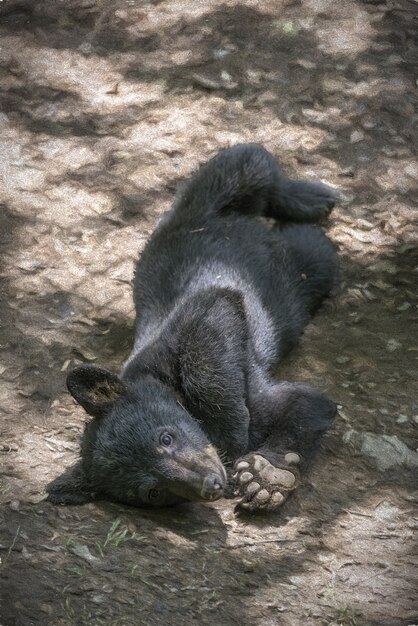Interesting Facts About Black-Footed Ferrets

The black-footed ferret is one of the rarest mammals in North America.
Black-footed ferrets have a distinctive black mask across their face.
They are also known as prairie dogs’ nemesis because they primarily feed on them.
Black-footed ferrets are excellent diggers and can create expansive burrow systems.
They have a slender and agile body, allowing them to navigate through tight spaces.
These ferrets have a distinct odor that helps communicate with other members of their species.
Black-footed ferrets are highly adaptable and can survive in a variety of habitats.
They are known for their high-pitched and playful vocalizations.
The black-footed ferret’s scientific name is Mustela nigripes.
They were once considered extinct, but a small population was rediscovered in the wild.
Black-footed ferrets have a high metabolic rate and need to eat frequently.
They have sharp claws and teeth, enabling them to catch and consume their prey.
Female black-footed ferrets are smaller than males.
They are primarily nocturnal animals, meaning they are most active during the night.
Black-footed ferrets have a lifespan of around 3-4 years in the wild.
The species was listed as endangered in 1967 due to habitat loss and disease.
Efforts have been made to breed black-footed ferrets in captivity and release them into the wild.
The black-footed ferret is the only ferret species native to North America.
Interesting Facts About Black-Footed Ferrets part 2
Their diet consists mainly of prairie dogs but can also include rabbits and small rodents.
They have a specialized digestive system that allows them to digest and extract nutrients from their prey.
Black-footed ferrets communicate through a combination of vocalizations, scent marking, and body language.
They are highly territorial and mark their boundaries with scent deposits.
Black-footed ferrets are solitary animals and only come together for breeding purposes.
They are excellent hunters and can catch their prey in complete darkness using their acute senses.
The black-footed ferret population currently faces threats from habitat destruction and fragmentation.
Conservation organizations are working to restore and protect the ferret’s native grassland habitats.
Black-footed ferrets are an important indicator species for the health of prairie ecosystems.
They have a unique hunting technique called gazumping, where they use a sideways hop to disorient their prey.
Black-footed ferrets have a high level of energy and can move quickly when hunting.
They have a specialized liver that allows them to break down toxins found in the prairie dog’s body.
Black-footed ferrets are highly sensitive to changes in their environment, making them excellent environmental indicators.
The species was successfully reintroduced into several native sites, helping to increase their overall population.
Black-footed ferrets are curious creatures and spend a significant amount of time exploring their surroundings.
They have a keen sense of hearing and can detect the slightest sounds.
Black-footed ferrets are known for their playful behavior, often engaging in wrestling and chasing games.
They have a distinctive vocalization known as a chirrup, which is used to signal danger or call for other ferrets.
Black-footed ferrets have a flexible spine that allows them to contort and squeeze through narrow tunnels.
They rely heavily on their sense of smell to find food and locate other burrows.
Black-footed ferrets are known to steal food from other predators like coyotes and birds of prey.
They have a specialized gland near their anus that produces a strong musky odor as a defense mechanism.
Black-footed ferrets are known to be quite territorial and will fiercely defend their territory.
They can reach speeds of up to 15 mph (24 km/h) when chasing their prey.
Black-footed ferrets have a solitary nature but may form temporary alliances during feeding or breeding seasons.
They have long and slender bodies, with females weighing around 0.9-1.2 pounds (400-550 grams).
Black-footed ferrets have distinct markings on their fur, with their back and sides being light brown and their belly being white.

